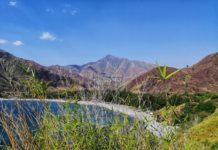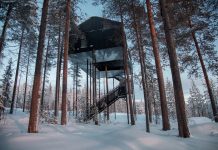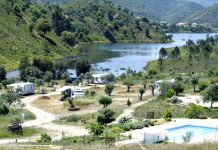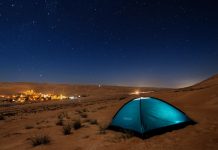Sicily is one of the most beautiful islands on the planet and it’s also one of the most dramatic due to the presence of Mount Etna, which is one of the world’s most active volcanoes. If you’d like to get a close up look at this famous lava-spewing icon, you’ll be able to find it smack dab in the middle of Italy’s Etna National Park.
The park’s approximately 225 square miles in total size and was officially established back in 1987. This fascinating mountain has been in a state of constant eruption for close to 500,000 thousand years now. However, even though there have been numerous eruptions you’ll still find the area covered over by beautiful birch, beech, and pine forests.
(photo by Jonathan Edgecombe)
Mount Etna is Europe’s tallest active volcano as it reaches about 10,925 feet into the sky. The actual height of the volcano actually varies when the volcanic materials accumulate when it erupts and parts of the crater walls begin to collapse. It’s believed the mountain was named by using Greek and Latin translation which means ‘to burn.’ However, some linguists feel Etna may be named after the word athana, which means furnace in Phoenician.
The history of Mount Etna has been recorded like no other volcano. The first recorded data about the erupting mountain date all the way back to 1500 B.C. Since then historians have recorded about 200 more eruptions. Luckily, most of them have been pretty tame when it comes to resulting in destruction and death.
In fact, it’s believed the volcano has been responsible for just 100 deaths over the years. It’s been a bit worse where destruction is concerned though since the nearby township of Mascali was destroyed by Etna back in 1928.
The mountain possesses some very rich soil which is in local apple groves and vineyards. When visiting Etna National Park you’ll also find the lava has carved out over 200 caves in the surrounding area. These caves have been used by local Sicilians for several purposes over the years, such as food storage cellars and sacred burial grounds.
Centuries ago, large mammals used to roam the area, but these days you’ll likely run into wild cats, martens, foxes, mice, and rabbits. However, these small animals need to keep their eyes open at all times as they’re often the dinner of some of the area’s birds of prey such as golden eagles and peregrines.
One of the most popular scenic sites in the park is the Bove Valley, which is shaped like a horseshoe. This area consists of gullies, lava formations, and cliffs and spreads out for 14 square miles. The basin’s walls are close to 3,300 feet high. You can reach the park by train from Catania, which is the second-largest city in Sicily and lies in the shadow of the mountain, and get off at Rifugio Sapienza.
If you’re lucky, the best time to visit the park is when the mountain’s erupting. It’s quite a spectacle to see the red-hot lava shoot into the air and down the mountainside. However, it’s hard to predict when these eruptions are going to take place. Once the mountain starts to erupt though, the show can go on for days or even weeks and months.
You can get a great view of the park from the train that leaves Catania’s Borgo Station as it travels around Mount Etna. Many people also explore the park by booking jeep tours. The park’s headquarters are located in Nicolosi, and buses run here from local communities. Cable cars take you close to the summit and climbers can take guided tours. You’ll also find several campgrounds available in the local area.










